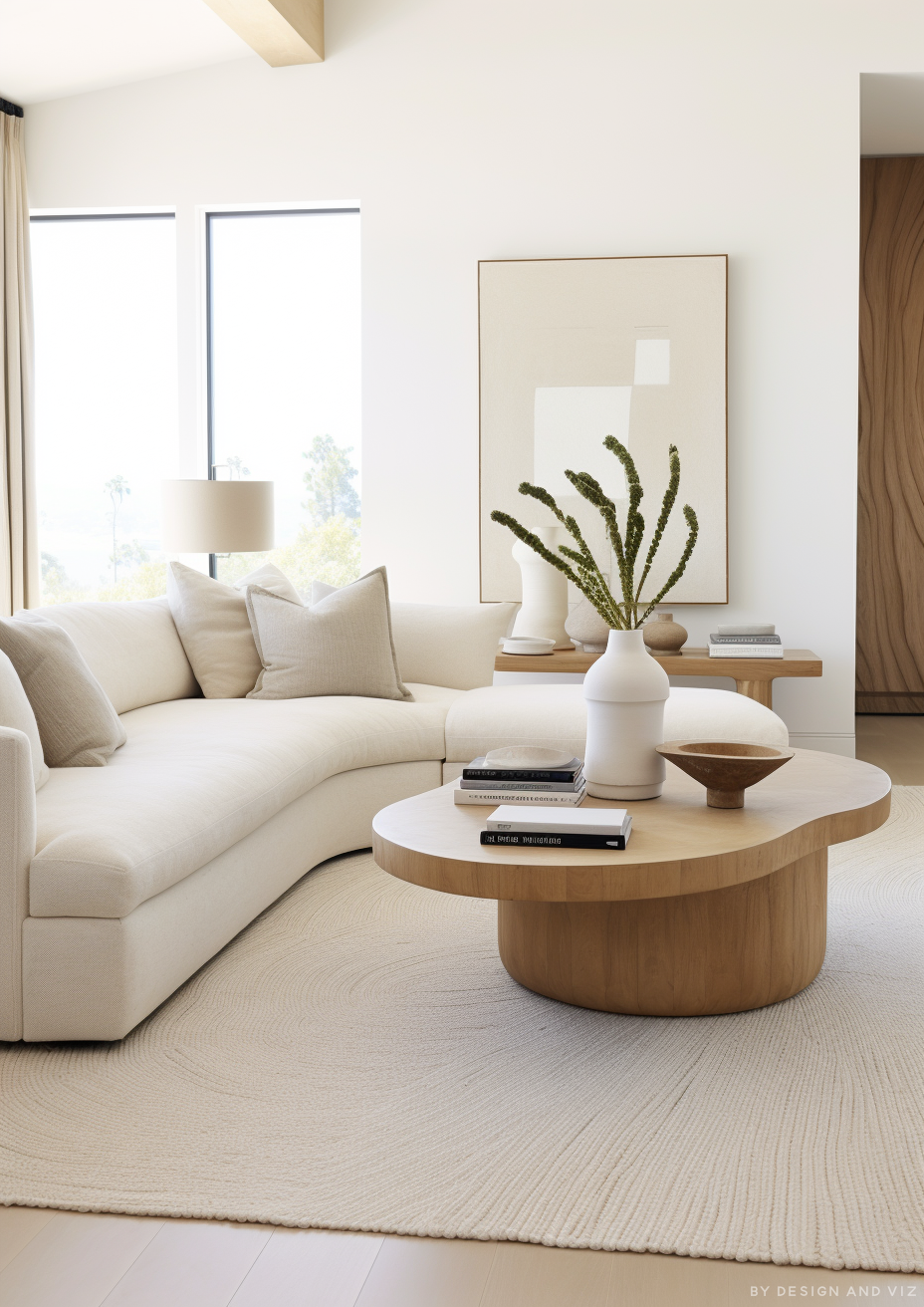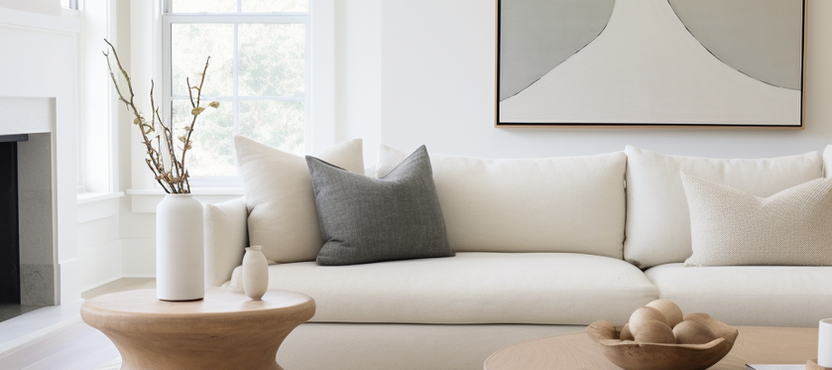How To Layer Rugs: What Designers Always Do To Add Depth Instantly
- Beril Yilmaz

- 23 minutes ago
- 6 min read
Layering rugs is one of those design tricks that looks effortless when designers do it — but somehow mysterious when you try it yourself. Should the top rug be smaller? Should the patterns coordinate or contrast? Are angles allowed, or are they a crime against symmetry? And what happens if everything ends up looking like a textile sandwich?
The good news is that layering rugs is far less intimidating than it seems. In fact, once you understand a few simple principles, it becomes one of the most useful styling tools you can use at home. You get more dimension, more shape, more visual interest, and yes — more personality in a room that previously looked flat.
Whether you’re updating your living room, refreshing a bedroom, or experimenting in a hallway, this method works almost everywhere. And today, I’m walking you through the exact layering techniques designers rely on again and again — the ones that instantly make a space feel considered, pulled together and full of depth.
If you’ve ever looked at a room and felt like something was “missing,” layering rugs might be the solution you didn’t know you needed.
At A Glance
• How to choose the right base rug
• How to pick the best top rug size
• How to mix patterns without clashing
• How to use texture for depth
• How to angle rugs for shape
• How to blend old + new rugs
• Designer tips for foolproof combinations
1. How To Layer Rugs: Start With a Neutral Base Rug That Sets the Foundation

Every layered rug combination begins with a reliable base. This rug should be simple, grounded and large enough to anchor your furniture. Think jute, sisal, wool-blend neutrals or flat-weave rugs in natural tones. This base layer takes up most of the floor area and gives you freedom with the top rug.
Why this works:The base rug creates a calm backdrop. It holds the layout together while giving shape to the top rug — which is where the personality comes in.
Designer Tip: If your furniture legs aren’t sitting fully on a rug right now, layering can solve that. The base rug should extend beyond the furniture arrangement by at least 20–30 cm.
2. How To Layer Rugs: Choose a Smaller Top Rug That Adds Shape or Colour

Once your base rug is down, the top rug is where the character and contrast happen. This rug should be smaller — significantly smaller — and placed intentionally toward the seating zone or focal point of the room.
Styles that work beautifully as top rugs include:
Persians
Animal prints
Distressed or vintage rugs
High-pile or fluffy textures
Patterned kilims
Designer Tip: The top rug should be roughly two-thirds the size of the base rug. Too big and it loses impact; too small and it looks accidental.
3. How To Layer Rugs: Coordinate Patterns Without Matching Them

This is where many people get stuck. The goal isn’t to match patterns — it’s to coordinate them.
A few dependable combinations:
Pattern + solid
Bold pattern + textured neutral
Vintage motif + organic jute
High-contrast print + flat base rug
What you want to avoid:Too many competing patterns of the same scale. For example, stripes on stripes or two very busy prints.
Designer Tip: Look for a connection between the two rugs — even a single shared tone is enough to make the combination feel intentional.
If rug proportions, colour combinations, or layout make your space feel complicated, we can help. Our step-by-step design process gives you clarity on placements, materials and styling — all customised to your home.
4. How To Layer Rugs: Mix Textures to Add Dimension (The Secret to Depth)

Texture is the real core of layering. It’s what makes a room feel dimensional instead of flat.
Strong pairings include:
Jute base + Persian top
Sisal base + sheepskin top
Woven base + dense wool top
Flat-weave base + nubby textured top
Texture isn’t just visual — it changes how movement feels in a room. The contrast adds interest without adding noise.
Designer Tip: Aim for two completely different textures. If both layers feel similar, the effect gets lost.
5. How To Layer Rugs: Use Contrasting Colours Strategically

You don’t need bold colours — you just need contrast.
These combinations always work:
Light base rug + dark top rug
Beige base rug + black patterned top rug
Natural jute base + deep patterned rug
Grey base rug + terracotta top rug
Contrast gives definition, helping the layers read clearly.
Designer Tip: Pick one colour from the top rug and echo it once elsewhere (a cushion, a throw, artwork). This ties the room together instantly.
6. How To Layer Rugs: Combine Old and New Rugs For Collected Character

Layering is the perfect way to use rugs you already have — especially if a beloved vintage or inherited rug is too small for your space.
Place the smaller, meaningful piece on top of a larger neutral rug. The base layer expands your layout while the top rug becomes the focal point.
Designer Tip: This method is excellent when moving homes — it allows old rugs to fit into a new layout without feeling lost.
If you want help choosing rug sizes, layering combinations or layout placement, book a free call with us and we’ll walk you through your exact room setup.
7. How To Layer Rugs: Play With Angles To Change the Room’s Shape

Angles are optional — but they’re a designer secret weapon when used well.
Try this when:
Your main rug is slightly too small
You want to expand the defined seating area
You need visual direction between rooms
The furniture layout feels static
A diagonal top rug can soften harsh lines or draw the eye through a space.
Designer Tip: Keep angles subtle — too dramatic and the room starts to feel chaotic.
8. How To Layer Rugs: Consider Pile Height For Comfort vs. Structure

Your base rug should generally be low to medium pile. The top rug can be fluffier, softer or more decorative.
Why?A high-pile base rug makes the top rug look sunken or unstable, while a flatter base rug gives a clean, supported look.
Designer Tip: If you love a fluffy rug, keep it as the top layer only.
9. How To Layer Rugs: Create Zones in Open-Plan Rooms

Layering rugs is incredibly effective in open-plan layouts. It helps you carve out:
A reading corner
A dining space
A conversation area
A workspace
The base rug grounds the entire zone; the top rug sharpens the focus.
Designer Tip: Use the top rug to define the heart of the zone — typically the coffee table or the centre of the seating arrangement.
10. How To Layer Rugs: Make Small Rooms Feel Larger With This Trick

Yes — layering can actually make a small room feel bigger.
Here’s how:
Choose a base rug that nearly fills the room
Add a much smaller, contrasting top rug
Place the top rug toward the centre or under key furniture legs
This creates visual expansion while adding dimension.
Designer Tip: Keep the base rug close to the wall edges to stretch the perception of width.
11. How To Layer Rugs: Match The Arrangement to Your Furniture Layout

Furniture placement matters. Don’t treat rugs as independent objects — they’re part of the layout.
Examples:
Living room: top rug under the coffee table
Bedroom: top rug at the foot of the bed
Office: top rug under the desk or reading chair
Designer Tip: Always align the top rug with something meaningful — a table, a chair, a walkway, or the centre of the room.
12. How To Layer Rugs: Troubleshoot Common Layering Mistakes

If something feels off, it’s usually one of these:
Top rug too big → overwhelms the base
Textures too similar → looks flat
Patterns competing → lacks clarity
Rugs not anchored by furniture → feels random
Designer Tip: When in doubt, simplify. A neutral base + patterned top is the easiest win.
Conclusion
Layering rugs is one of the most impactful styling moves you can make. It transforms a room’s depth, adds personality, and helps your layout feel more designed. Once you understand the principles — scale, texture, contrast and placement — layering becomes a tool you’ll use over and over again.
Whether you’re refreshing your living room or rethinking your bedroom, this method delivers instant interest without replacing furniture.
FAQ: How To Layer Rugs
1. How do I choose the right size for layered rugs?
Use a large base rug with a smaller top rug that’s around two-thirds the size.
2. What rugs work best as a base layer?
Jute, sisal, wool-blend or flat-weave neutrals work well.
3. Can I mix patterns when layering rugs?
Yes — pair a simple base rug with a patterned top rug or mix patterns of different scales.
4. Should I layer rugs in small rooms?
Absolutely — it adds depth and helps define zones without taking up extra space.
If you want a clear plan for your layout — from rug layering to furniture placement and colour choices — explore our design packages. We’ll help you create a home that feels intentional, balanced and fully tailored to how you live.
Author Bio
As the founder of BY Design And Viz, I help homeowners create rooms that feel considered through clear palettes, thoughtful styling and practical design choices. My approach blends creativity with problem-solving, giving every space a confident, curated look.


































